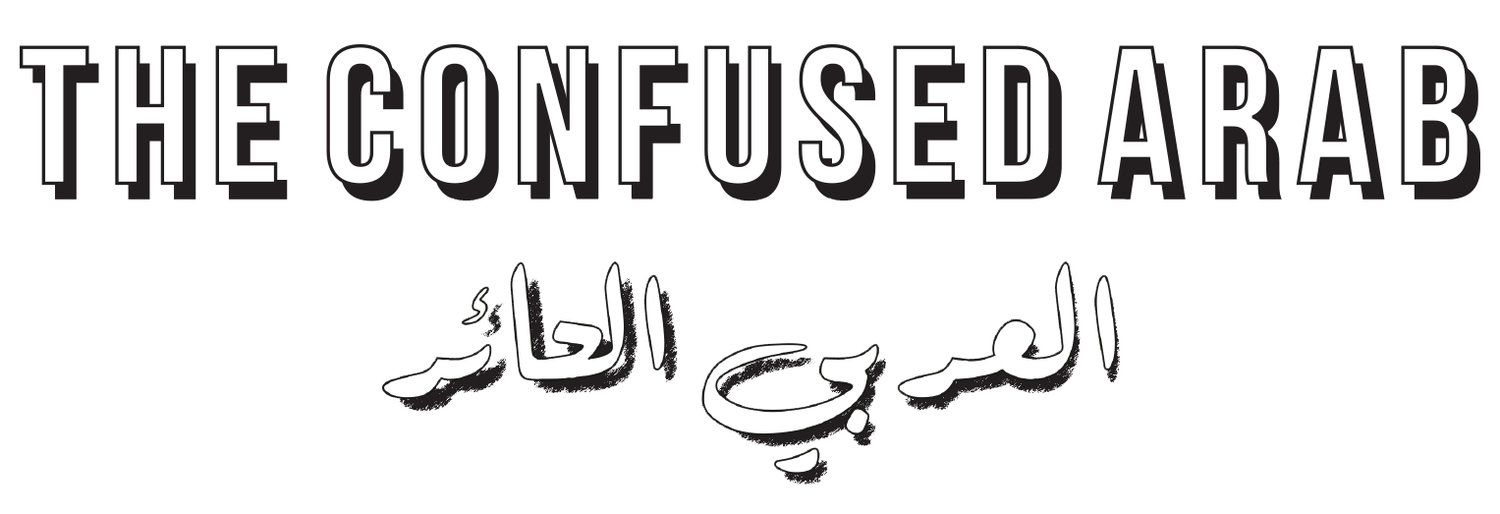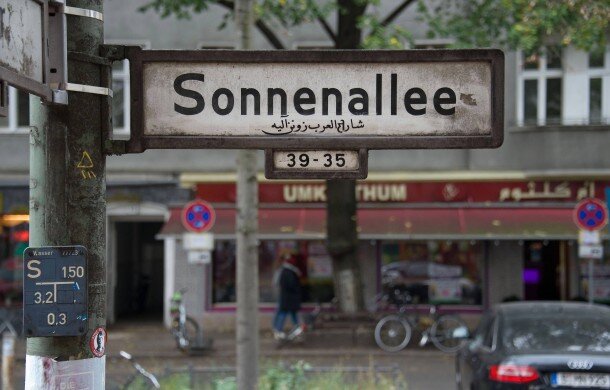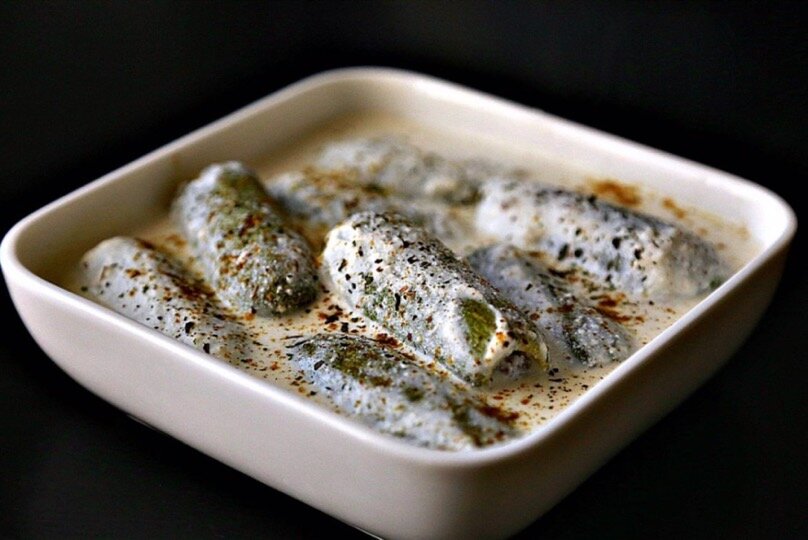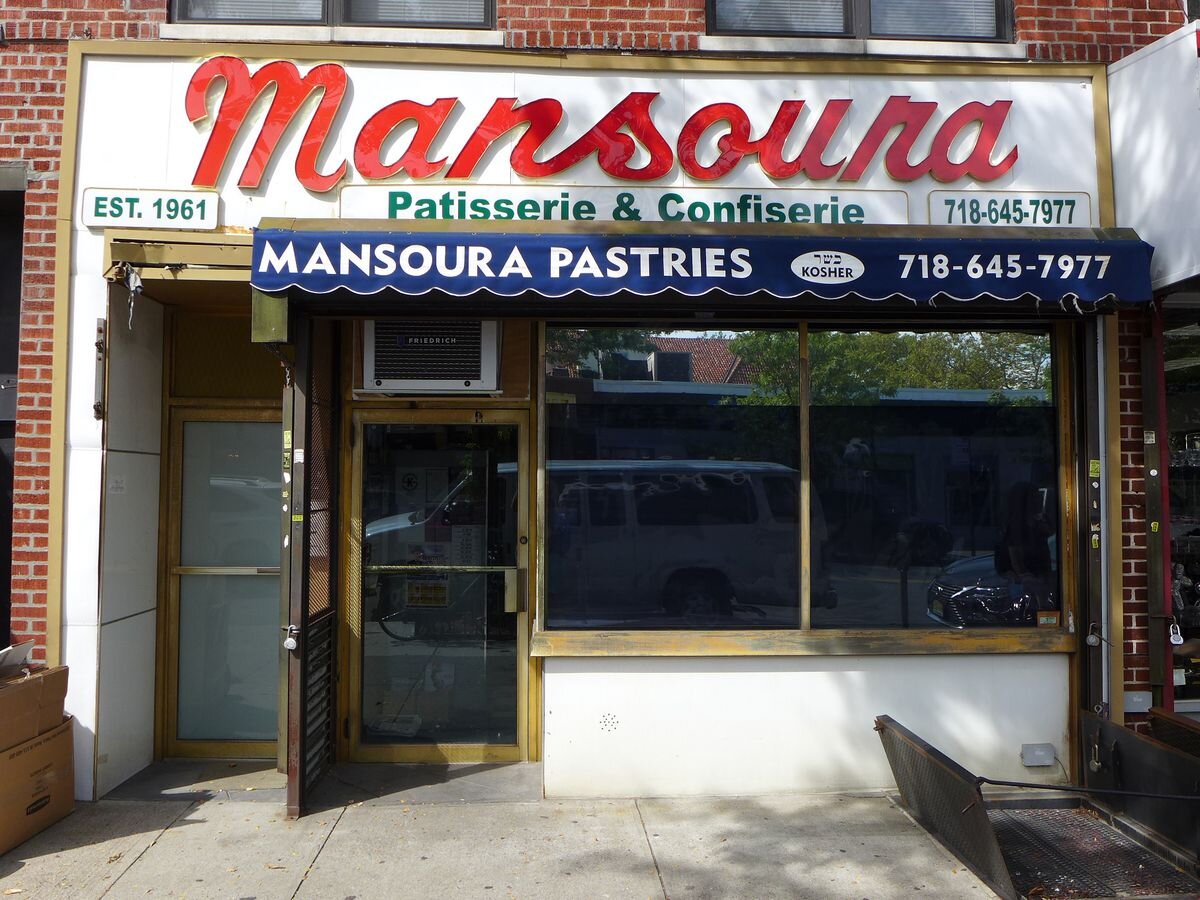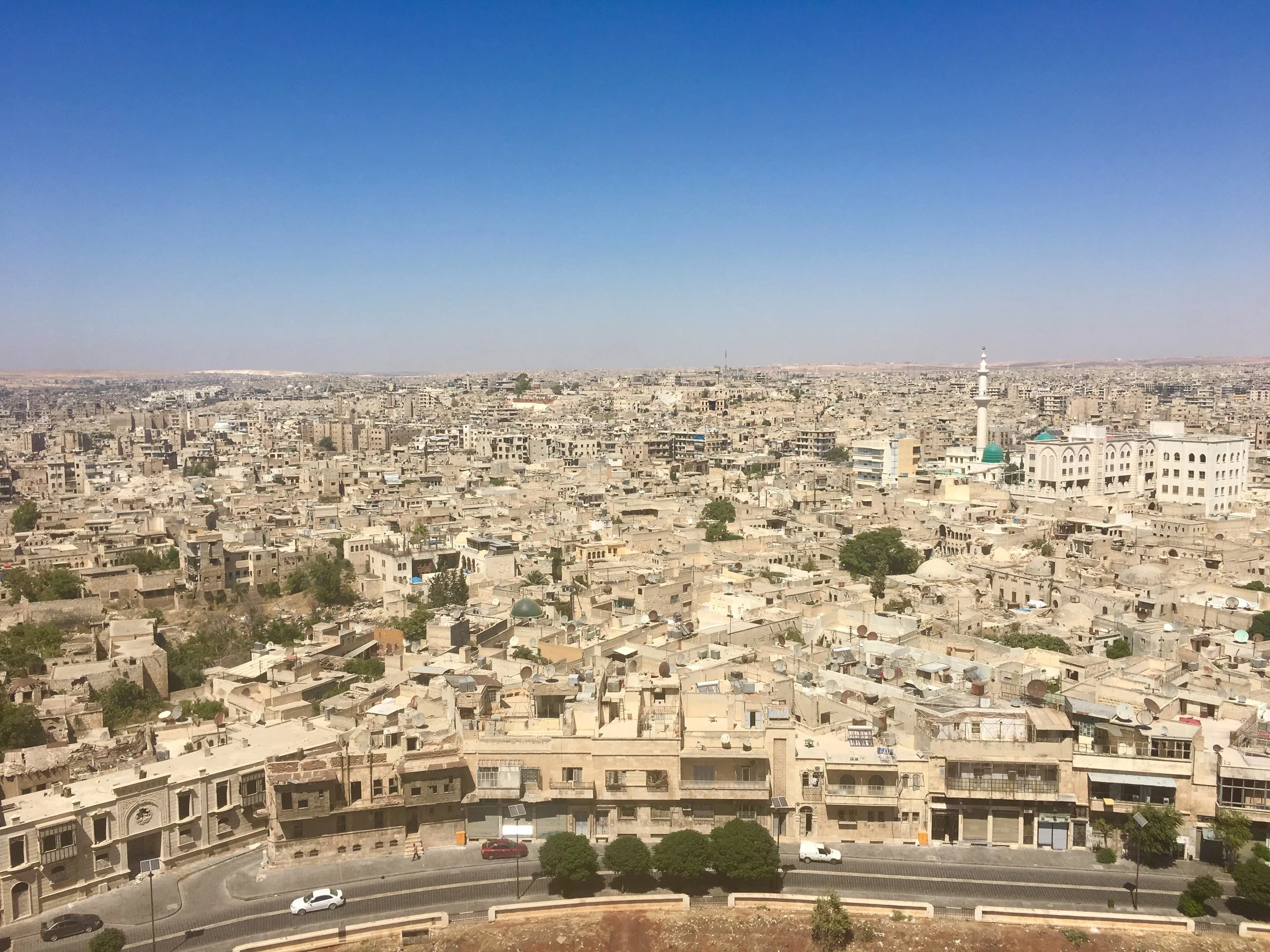



Aleppo-Discover
The Best of Aleppo
Aleppo-Discover
The Best of Aleppo
Always strong and ever vibrant, yet still healing. One of the oldest, most beautiful cities in the world has been broken.
Aleppo is so much more than the city you’ve seen in the news. This city defeats the odds of war, rising above. Aleppo lives. Lit up by the sparks of hope emanating through the cracks of its people’s hearts.
This guide has been inspired and provided in collaboration with Dima XXX, @womanoftheorient, an Aleppian diaspora child, passionate to maintain and revive her family’s hometown heritage
Identity Card
• Alep in French, Aleppo in English, حلب in Arabic, was first settled around 5000 BC
• Aleppians: Just over 2.1 million. Aleppo was once was Syria’s largest city, and now is the second largest. It is one of the oldest continuously inhabited places in the world.
• Language: Mainly Arabic, the “Halabi” dialect. Some communities speak French, mostly elders or Christian families, as the nuns used to speak French to children in school. Armenian is widely spoken by the descendants of the Armenian genocide.
• National currency: The Syrian pound (lira)
The city of Aleppo spans centuries – for thousands of years it has thrived as the largest, most populated and cosmopolitan city of Syria. Take its name, for example: from “Chalybon” to “Halboun” and “Beroia”, we call it “Halab” today in Arabic, more precisely “Halab Al Shahba”.
Being among this city is like weaving together a rich tapestry. From the Akkadians to the Greeks and Romans, Umayyads, Ayyubids, Persians, Hittites, Byzantines, Assyrians, Mameluks and Ottomans, Aleppo has seen and served countless civilizations and dynasties. From each, it absorbed customs and traditions that live to this day with evolutions, transformations and transgressions while keeping the spirit intact.
Aleppo, like its famous spices, has always been a root of enchantment. Today Aleppo is multi-cultural and multi-religious and has always been known for coexisting while resisting a single definition. Like you, like us, Aleppo is complex. Curious. Beautiful and generous to those who take the time to share and respect its space and spirit.
Asking who is here, is a complicated question, and conjures another: Who is coming back? In the past and still today, the majority of the population is Muslim but many are Christian too. Culturally, most are Arabs. But like its history, its culture is rich and varied: there are also Syrian-Armenians, Kurds, Circassians and Assyrians in the city.
To this day, the history of Aleppo can be retraced simply by walking across the spellbinding fortified city and the architecture that it carries within.
Famous Aleppians
• Sabah Fakhri
If Aleppo had a king, it would be Sabah Fakhri. Born in 1933 , he is as close to Aleppian’s hearts as it gets – his entire musical education is from Aleppo. Every Halabi grew up listening to his songs as lullabies which are considered as Aleppo’s anthems. He is called “ Malek El Qudud”,The King of Queddouds across the Arab world and is famous for his mawwals, long introductions to a song that demands a strong voice…and Sabah Fakhri has it – he once sang for 10 hours straight in Caracas, Venezuala, making it to the Guinness Book of records. A powerful living symbol, Sabah Fakhri is to Aleppo what Umm Kalthoum is to the Arab World .
• Mayada Al Hennawy
Mayada Al-Hennawy, 60, is a singer renowned for her voice, songs and simplicity. You would often find her having dinner with fellow Aleppians in the city’s most modest restaurants. The Egyptian composer Mohamed Abdel Wahab discovered her at a young age and made her tour the Arab world when she was 18, all to learn, calling her “Moutriba al Jeel” (Singer of her generation). Her voice is moving, her sound is indelible, and throughout her career she worked with many excellent artists.Listen to Mayada.
• Bassam Koussa
One of the most well-known actors from Syria, and his roots are in Aleppo. He has received wide recognition for his roles in shows like Bab Al 7ara, and he is also a part of the great Syrian Drama legacy. More recently, he has taken on roles including the Syrian-Lebanese movie “ma7bas” / “Solitaire” by Sophia Boutros.
• Diana Al Hadid
Born in Aleppo, the famous modern sculptor moved to the United States when she was 5. Mixing several inspirations from Sci-Fi to mythical past, Al Hadid magnifies different supports and media to express her understanding of the world. Her work is now part of several collections in the USA as the Whitney Museum of American Art in NYC or in Europe as the Secession in Vienna, Austria.

Aleppo-Look
The Best of Aleppo
Aleppo-Look
The Best of Aleppo
“I miss the burning sun of Aleppo. Placing my hand on the stoned walls and feeling the heat with the smell of summer. Cars honking. Syrian spirit. Middle eastern probably. I hate silent streets, I probably got that from life there. It's always flaming with people and nothing is more joyful.”
@womanoftheorient
The harshest days of war seems to be fading away very slowly and life is still very hard but the beauty is progressively coming back. Memories are everywhere, some springing back in physical form – as buildings, as homes – others holding onto the photos and corners of people’s minds, keeping them alive. But you can take a tour through it all.
The Citadel
The Souks
Jdeideh district
Djamilieh
New Aleppos
The Citadel
To completely discover Aleppo, you must go where its heart meets, The Citadel (Qale’et Halab) in the old city. One of the biggest citadels in the world and an immense pride for the people of Halab.
Though you may just be visiting, know that we say you are not a real Aleppian if you don’t visit the site every chance you get. It is magnificent – visit for breakfast and then explore inside. You could do this your entire lifetime and still make new discoveries as you run up the stairs to observe the entire city from up high.
If you needed to boost your energy, the square in front of the citadel offered a vast array of coffee shops and restaurant. Before the war, it was the place to be. The entire square was destroyed and has been rebuilt since, trying to give back to Aleppo, its old atmosphere.
The Souks
If you keep walking around the Citadel, you’ll find Souk Al-Mdineh, one of the oldest and largest souk in the world (1500sqm).
Perhaps what makes the souk so terrific – and after the war, so tragic – is that it holds a deep meaning for every Aleppian, the mother getting her spices, the grandmother bringing treats home from the sweet shops behind the Great Mosque of Aleppo, or the aunt buying fabric and always trying to get the best prices.
Source: Seier
What makes it so authentic, so beautiful?
“It was one of my favorite things to do. Go to souk al-Mdineh in Aleppo, with my mother and aunts. They would get their spices and I fancied the Syrian silver jewelry and the scarves, I still wear them everyday. Then when we got a little older, we would go with my friends and try imitating our parents into getting a lower price. We had all the technics, I still smile thinking about it. Souk al-Mdineh is huge, it has so many alleys and so many parts yet I still have most of them in mind.” Dima (Woman of the Orient)
Suddenly, you get caught by an incredible smell. Aleppo is famous for its spices and “Souk el ‘Aterin”, has a story of its own, very linked to the culinary heritage of the city.
“Souk El Saboun,” or “the soap souk”, an important part of a city famous for its soap, called “Saboun Halab” or “Saboun Ghar” translating to “Laurel Soap”. It is made out of olive oil, lye and most importantly, laurel oil – the substance that defines its quality: the higher the concentration, the better. Breathe it deeply.
Source: @womanoftheorient
Because it’s handmade, Inhale the richest memories and stories of Aleppo through its smell. And, like wine, the older the soap gets, the better it is. Aleppo Soap is one of the oldest soaps in the world, if not the oldest.
In older times, Aleppo soap was the cleaning product used for everything, from body, to hair and laundry washing. It is considered magic to this day – the answer to any stain, to stronger hair, to softer skin. It was the favorite gift everyone was getting when visiting friends and family living abroad.
Beyond souks, other markets, Aleppo’s Khans and old Aleppo hold great history. Your shopping transforms in a journey every single time you visit.
In Khan Al-Shuneh, a separated part of the souk in front of the citadel, there used to be artisans weaving on the loom. This is precision is to cherish. Relish. Admire. Despite the challenges, we have hope. Before you visit, you must meet the city craft heritage.
The artisans who have been working in it for decades. They were and are a part of it, they were and are it. But there is much work to do to save what was lost.
Syrian heritage lies deeply in the passion of Artisans who have within their hearts to carry the traditions.
One of the biggest tragedies that happened in Syria during the war was in September 2012 when a big part of the souk was set on fire, destroying centuries and centuries of history.
Source: World Monuments Fund
Aleppo’s ancient city is also very famous for its Hammams. These are not only places of cleansing but also gathering. Family. Cooking. Togetherness. Yes, in Aleppo, the Hammam was like a social club, to discuss all kinds of businesses. After the Citadel, explore Hammam Al-Nahhasin, built around the XII century and located inside Souk Al-Mdineh. Keep in mind – men and women go at different times, and there are also special hours to visit.
Source: Pascal Meunier (2000)
Move from cleansing to healing. Down the ancient city, near Bab Qinnisrin, lays Bimaristan Argun Al Kamili. Built in 1354 by Argun Al Kamili, a representative to the Mamluk Sultan, the building, one of the oldest hospital in the islamic world, was a mental health asylum (“Bimaristan” means “hospital” in Persian). Throughout the property, you’ll find fountains at the heart of every area. It was once believed the sound of the water fountain streaming helped calming and healed the patients.
Imagination is an antidote to the destruction this city has experienced.
Let the city speak to you through what’s missing, and what is being recovered: Bab Al-Faraj, “The Gate of Deliverance”, was demolished in 1904, with a renovation program on its way. Bab Al-Faraj is mainly now the name of key landmarks of Aleppo: Bab Al Faraj square with its clock tower built around 1898.
Curious? Learn where Aleppians learn. Right in front of Bab Al Faraj, The National Library of Aleppo was built in 1930 and opened in 1945. A symbol and sanctuary for the mind.
Jdeideh district
Source: @womanoftheorient
Jdeideh District, one of the oldest areas of Aleppo, lays outside of the historic walls of the ancient City. Its corners intrigue…old narrowed streets and alleys, old Arab-styled houses and mansions as Beit Ghazaleh, churches and jewelry shops, especially silver jewelry shops. In this mostly Christian district, you’ll meet many of Aleppo’s most significant churches as St Elia Church situated on Farhat Square. In Jdeideh, Al Hatab Square is the heartbeat, the center. Though it’s sprinkled with silver jewelers, hotels, restaurants and coffee shops, the war has deeply damaged the area, Al Hatab Square feeling the devastation most acutely.
Forty Martyrs Cathedral
The Armenian Apostolic church, located in the old Christian quarter of Jdeydeh, is a significant landmark for the Armenian community of Aleppo. Indeed, the 15th c building is one of the oldest and still active churches through all the Armenian diaspora and the city of Aleppo. After being fully destroyed in 2015, the Cathedral was renovated thanks to the financial participation of 150 000 people and reopened in 2019.
With several centuries of presence in Syria, Armenians are fully part of the city. To the first households, installed in Aleppo for business, the community grew substantially after the 1915 Armenian genocide. Fleeing Ottoman massacres, more than 60,000 Armenians found a safe haven in the city. They quickly integrated the local life specializing in trade and crafts .With a strong network of Armenian schools, education remained a key factor to preserve the Armenian language and identity.
As you continue, meet Sahet Saadaallah Al-Jabri, a square named after Saadallah Al-Jabri, a man who served twice as Prime minister of Syria in the 40’s. Relish being at the center of some of Aleppo’s most moving relics. Reach many different streets since this square sits in between the road taking you to Azizieh , the public garden and the ones taking you to the old city and Djamilieh. As it used to be surrounded by many hotels, memories of previous visitors whisper around.
Source: @aleppototheworld
The public garden Al Hadiqa el Aameh vibrates with memories of Aleppo at its best: older people used to walk around, reminiscing about old memories, feeling nostalgic, showing the place to their grandchildren. Indeed, this place was always filled with grandparents and their grandchildren, a garden fertile for every generation.
Every corner of this city teaches you how culture is central in the city. A perfect example is Omnia, a library that sold books and school materials. It became a ritual: Every end of August, parents and their children used to gather here, buying what they needed for school.
Djamilieh
This area is the city’s main Jewish street. Even though the Jewish community has vanished, Syrian Jews used to live in Djamilieh – and if you explore today, you can still find a synagogue. The Jewish Aleppian community found a new home in several spots of the world and mainly in New York. As early as the 1930’s, several Jewish families from Aleppo settled on Lower Manhattan to recreate a“Little Syria. They lived a second exile by massively leaving Manhattan for Gravesend, Brooklyn. If in NYC, you must visit Mansoura, authentic aleppian pastry in the Big Apple.
M7atet Baghdad , Baghdad station is the railway station of Aleppo. Locals will tell you about journeying here to reach Latakia, the closer coastal city, during spring and summer. The journey was always long, but well worth it. In order to pass the time, children used to make up songs out of the names of the cities we passed by on the road. Can you hear the whir of the trains and passengers? Like its history and headlines, the memories of this city are everywhere.
You can feel the layers of this city. Aleppo is very well known for its multi-cultural, multi-ethnic and multi-religious identity. Here you’ll meet Arabs, Assyrians, Chaldeans, Armenians, Kurds, Circassians.... Together all thrive and respect our city’s rich tapestry, and while heritage is a source of pride, keep in mind that it is considered rude to ask about someone’s religion as in all Syria in general.
Feel this coexistence through its greatest symbol: Jame3 el Tawhid ,The Mosque of Tawhid, situated in the center of the city. It has four minarets and around each minaret lays a Church. And it frequently happens that when the muezzin calls for prayer, the bells of the churches ring simultaneously. Listen close as the most beautiful melody of Aleppo covers the city.
If you wander towards the souk, you’ll find the Jame3 al Kabeer, The Great Mosque, an Omayyad Mosque in the old city, the biggest and oldest mosque in Aleppo. Every Aleppian has visited it once whether Muslim or not. Sadly, it has been deeply destroyed during the war and its minaret has fallen. It is hard to explain how hurtful this is to the history of Aleppo and its citizens. But the dust settles. Restoration begins. This mosque is living, breathing, just like us.
Praying. Practicing. Remembering. Changing. Enduring. The Great Synagogue of Aleppo renovated by the NYC diaspora in 1992 is still standing but remains empty and silent. It used to be home to the “Aleppo Codex” a medieval manuscript of the Hebrew Bible. Local Jewish legend used to say that once the document would leave the city, it will be a sign of the end of the community.
You could continue this journey forever. Aleppo holds many emblematic, historical and beautiful churches along with beautiful mosques and synagogues. No matter your religion, you’re welcome in each of them, always.
You could continue this journey forever. Aleppo holds many emblematic, historical and beautiful churches along with beautiful mosques and synagogues. No matter your religion, you’re welcome in each of them, always.
New Aleppos
Here and there, since decades or just few months, Aleppians have taken a bit of their city on different spots of the world.
Brooklyn- New York
Through times and even before the Syrian Civil war, the once numerous Jewish community of Aleppo has shrunk to find a new home in the busy New York. The "SY" ('“ess-why”), short for "Syrians" are mainly composed of Damascene and Aleppian Jews who migrated in the early 1900's as in 1990's once Hafiz Assad allowed Syrian Jews to leave Syria under the condition of not going to Israel. Affluent businessmen or religious dignitaries, Aleppian Jews (with other Syrian Jews) are more than 75.000 in New York. A community in the community as they were often called " Arabische Yidden" (the Arab Jews in Yiddish) by the majority Ashkenazim New-York Jews. Until now there is still a notable difference between "Halabi SY" (Aleppian Jews) founding themselves more knowledgeable and "Shami SY" (Damascene Jews) but both communities follow one of the most conservative rule, the “Edict” making intermarriage (with non Jewish) impossible: converts and children of converts are not accepted. The community was described in the theater play “Syria, America’ by Lance Crowfoot-Suede'. The production takes place in a Syrian Jewish neighborhood in Brooklyn, where four childhood friends are forced as adults to choose between their homosexuality and their community, leading to an unforgivable betrayal.
Source: Magen David Synagogue
Berlin- Germany
The latest war pushed massively Aleppians to find safer places for them and their family. More than a million Syrians settled in Germany to start a new life. In Berlin, the heart of the community lays in Sonnenallee, an area between hipster Neukölln and Kreuzberg. The district which used to be split by the Berlin Wall is also a traditional immigrant neighborhood, with Turkish and then Arab population. After welcoming Lebanese and Palestinian immigrants fleeing Lebanese Civil war in the 1980’s Sonnenallee was nicknamed “Little Beirut” and has now became “Arab street”. The area is the best place to find Syrian and Middle Eastern food while drinking hot tea with sheesha.
Source :FAZ

Aleppo-Eat
The Best of Aleppo
Aleppo-Eat
The Best of Aleppo
Do you Kibbeh?
Kibbeh be saniyeh (cooked in the oven), Kibbeh ma2lieh (fried), labanieh (with yoghurt) or safarajlieh (with quince), there are multiple ways of preparing kibbeh in Aleppo. The city is also famous for its mahashees (stuffed vegetables) and kebab and is often called “ Umm al Mahashee wal Kebab” (Capital city of the Stuffed vegetables and Kebabs). The rich history and the diversity of the population have contributed to make Aleppo the craddle of the traditional levantine cuisine.
There’s no joke about food here, it is complex, sophisticated and so heartwarming. "Get a few Aleppans together and the conversation naturally turns toward food". Wherever they will be, Aleppans will always bring food from their hometown with them. New York, London or Erevan, search for Aleppian food and you’ll find it served with memories.
Local specialities
• Kibbeh: a mix of burghul and ground meat blended and grounded together, creating a sort of paste then stuffed with fried ground meat, minced nuts or pistachios and minced onions. Kibbeh is considered as the main signature of Aleppo cuisine. There are around 77 different kibbeh dishes and 28 kibbeh recipes, quince kibbeh recipe is one of the oldest and dates back 800 years.
• Kabab Karaz: this kebab made of a mix between minced lamb and "wishna", a small and sour black cherry that grows on the outskirts of the city is a must taste. It is the perfect balance of sweet and sour flavours, the unique presentation on triangular pieces of bread decorated with pine nuts and parsley.
• Kibbeh Safarjalieh: very emblematic dish of Aleppo as it isn’t done anywhere else. This sour and sweet dish consists of quinces, beef or lamb meat (per usual) and balls of kebbeh cooked in tomato sauce and pomegranate molasses, to enhance the taste.
• “Sheikh el Me7shi”: Me7shi litterally means "stuffed" and is often used to name different kinds of stuffed vegetables dishes (similar to "Dolma"). This dish can be translated as “the king of the me7shis” as it's almost always made of zucchinis stuffed with rice and minced lamb, chopped onions and pinions. It can be fried or cooked in the oven with a sauce made of yoghurt with tahina and garlic
• Itch: this Armenian salad has been fully integrated to the gastronomy of the city. Often called "Armenian taboule", Itch is a fresh mix of bulghur, onions, tomatos and herbs perfect to challenge the classic Hummus, Babaghanush, Fatoush, mezze trinity.
• Mammounieh: this sweet dish is a must have in every breakfast table of Aleppo. This mix of semolina and butter stewed in water and sugar is served with a cream cheese called “jebneh mshalshaleh”. .
• Maarouk: this stuffed sweet brioche is a Ramadan stapple in Aleppo. We can find several recipes, mainly with different fillings eshta (cream), dates or chocolate.
WANES RESTAURANT
One of the oldest Armenian restaurant in town. Wanes is a family-owned restaurant managed by the second generation maintaining . Rich mix of traditional Syrian and Armenian dishes which makes it one of the best choices in Aleppo for authentic local kitchen.
Adress: Al Azizieh +963 21 211 6001
ALEPPO CLUB
Le Club d'Alep or نادي حلب (Nadi Haleb in Arabic)is, since its opening in 1945, the center of the bourgeois social life of the city. Local elite meets to discuss, play cards, listen to Sabah Fakhri while enjoying one of the best table. Located in an old mansion, with composite architecture , this institution moves to an outdoor spot during summer.
Adress: Azizieh (in winter)
MANSOURA BAKERY-NYC
Mansoura is a NY institution when it comes to Middle Eastern sweets. Founded in Aleppo in 1770 by a Jewish local family, the business relocated to Cairo in the early 1910’s,where it quickly became a top choice serving the Egyptian monarchy. The Revolution took them to Paris and New York where they settled in Brooklyn in 1961. Their knaffeh and ghribeh are a reference in whole America, especially for Sephardic communities
Address: 515 Kings Hwy, Brooklyn, NY 11223, United States
ALEPPO SUPPER CLUB-BERLIN
Aleppo Supper club is the brainchild of Ahmed, who after leaving Aleppo during the war decided to celebrate the culinary heritage of his hometown. Not a fix address but a pop up kitchen all over London. The Aleppo Supper club is a social entreprise bringing revenue to Syrian refugees in London.
When in London you can book them through their facebook page www.facebook.com/alepposupperclublondon

Aleppo-Speak
The Best of Aleppo
Aleppo-Speak
The Best of Aleppo
Lost in translation?
“Aleppo is more beautiful than Europe. Don’t emigrate” Well…
• Eshou: What?
• Khayo / Khayto: Brother / Sister. Usually used as "bro"
• Sh2ad: How much?
• Eshbak (m) / Eshbek (f)? : What’s up with you?
• Shlonak? (m)/ Shlonek (f)? : How are you?
• Esh fi ma fi?: What’s up?
• Men fast Halab: From the midst of Aleppo (usually answered when someone asks if you are from Aleppo)
• Abaw: A way of expressing your astonishment as in “wooow”
• Wakh wakh : Another way of expressing your astonishment but in a deceived way
• Maba3re : I don’t know
• Da 2asafer: I am going to travel - in Aleppo, to express one’s next move, instead of using the complete word “bedi” meaning in this context “I’m going to”, Aleppians shorten it to “da” – “Da ashouf” (I’m going to see), “Da al3ab” (I’m going to play) etc.
• Lek 3ala rassi 7artak: Literally translates to “Your street over my head” but is a way to thank someone, show them gratitude.
• Sewi : Straight (when you’re giving direction for the road, to say walk/drive straight, you use the word “sewi”
• Djabaseh: Watermelon
It is important to underline that in Aleppo, the “J” is pronounced “DJ” for example “Jem3a” as in “Friday” will be pronounced “Djem3a” in Aleppo. And, what is pronounced “A” in other cities will be pronounced “E” in Halabi. For example “mbar7a/mbare7” as in “yesterday” will be pronounced “Mbere7/Mber7a” in Aleppo.

Aleppo- Oh Night
The best of Aleppo
Aleppo- Oh Night
The best of Aleppo
Let’s be honest: talking now about a vibrant nightlife in Aleppo won’t be very appropriate. The city is progressively trying to rebuild itself and moving away from the past dark years. However, Aleppo has always been a lively city and Aleppans huge music fans. The city is the craddle of Muwashshah, a classical form of Arabic poetry set to music.
Alep can be split between “Shahba al Jdideh” (New Aleppo) and “Shahba al Adimeh” (Old Aleppo), and the separation is made by the Mogambo district, an area with notorious cafes and shisha places. Despite being a cosmopolitan city, Aleppo remains to some extent conservative and alcohol can be found in specific places as hotels or clubs.
BARON
Le Baron is not just a charmful boutique hotel but also a real landmark of Aleppo. Opened in 1911 by Armenian brothers, the hotel set up at that time new standards in luxury hospitality in the Middle east. The vintage interior and its bar welcomed international figures from Lawrence of Arabia, Agatha Christies, Winston Churchill, Charles de Gaulle as Gamal AbdelNasser. The owners have kept record of which famous guests stayed in each room with pictures hung inside. Closed in 2012, the hotel is not functional as now.
Adress: Baron Street
CLUBS (WHITE AND MALIKA)
Before the war,the club scene was blossoming mainly during summer with famous rooftops as the White or the Malika where Aleppan youth would meet up on week-ends . One of the highlight of Aleppo nightlife was when French Dj Bob Sinclar performed in Al Jalaa sport club.
